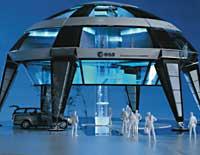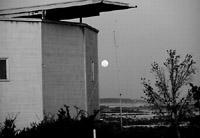Bioclimatic architecture
2002/11/01 Orobengoa, Olatz - Elhuyar Zientziaren Komunikazioa Iturria: Elhuyar aldizkaria
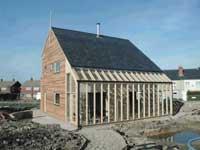
In this sense, more than one architect has begun to care for the design of buildings to minimize the discomfort to the environment. This is what some call sustainable construction. The sustainable construction of a building must take into account many factors such as materials, the characteristics of the place where it is to be built, the constructive techniques, the location of the building and the energy consumption. This last factor is what we will address in this article in households with minimal energy consumption, bioclimatic ones.
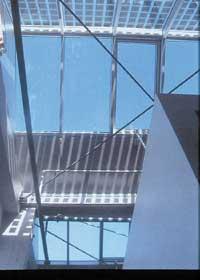
According to the students of bioclimatic architecture, one of the most severe impacts that can cause a home is its energy consumption throughout the period of use. The energy demand is constant and to meet this demand, fossil fuels are still being used. The processes used for electricity generation significantly increase the production of CO 2, and the best way to avoid it is by reducing energy expenditure, which is what bioclimatic architecture tries to do.
Bioclimatic architecture: use of solar energy
But, how is bioclimatic architecture defined? It is an architecture adapted to the environment that tries to minimize its impact on the environment and that aims to reduce pollution with the reduction of energy consumption. All this with a design and an adequate selection of materials, taking advantage of everything that the environment offers.
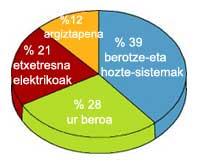
The bioclimatic house is energetically autonomous, for which an adequate design is essential. With the design an effective thermal control of the housing is achieved: it is the building itself that captures, stores and distributes the energy, both in summer and winter.
The main energy source of bioclimatic housing is the Sun. It is the easiest energy to find and take advantage of anywhere, economically, clean and not exhaustible. The design of bioclimatic houses aims to make the most of solar energy. This energy is used to heat the house, illuminate and heat the water.
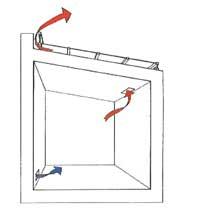

When designing the house, it is necessary to study the climate of the place where it will be built, the path of the Sun and the forms of heat transmission. In addition, all of them are factors that take into account the orography of the place to be built, the most common wind directions, vegetation, etc.
But how to take advantage of solar energy?
The main goal is to heat the whole house through the sun, which is where more energy is consumed. An adequate use of solar energy prevents the use of any heating or cooling system. For this purpose, orientation, insulation, ventilation and vegetation are the most important factors to consider.
As for the orientation, there are two options: having the most used rooms of the house and the doors to the south or building a glass greenhouse in the south wall, where all the heat of the Sun accumulates. Both options allow you to directly take advantage of the light and heat of the Sun for much of the day. To the north there will be rooms little used or with the smallest number of possible openings to prevent the heat from escaping.
In addition, the insulation of the house should be very good so that the heat accumulated during the day is not lost at night. The use of insulation materials can be very varied and if you want to build a sustainable housing, materials should be recycled or at least recyclable.
Very soft in winter and cool in summer
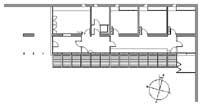
In summer, unlike winter, the Sun stays many hours in the sky and, in such an isolated house, more heat can be accumulated than desired. To prevent this from happening, it is very important to choose the ventilation system and proper vegetation of the housing environment.
It is necessary to achieve that the ventilation is carried out as much as possible without spending energy, since the final objective is to save energy. For this purpose, you can take advantage, for example, of the upward trend of hot air.
In areas where the air is cooler you can open gaps for the fresh air between in summer. In addition, in the upper part of the house, in the ceiling and in the roof, other openings can be opened to avoid the escape of hot air. In this way, the fresh air that enters the bottom of the house will make the warm air of the interior move up and help ventilate the house. Openings can be opened or closed according to the user's needs. In this way, when the house is very heated, it will be possible to generate air currents that reduce the temperature.
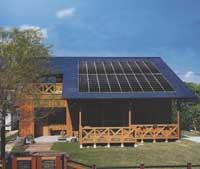
The vegetation surrounding the house can also contribute to the thermal stability of the house. Planting of deciduous trees or shrubs in the areas most exposed to the sun will mean a double job for plants. On the one hand they will shade in summer and refresh the atmosphere; on the other hand, by losing the leaves in winter, they will let all the rays of the sun pass and a suitable illumination will be achieved.
In winter and summer, the direction of solar rays will be taken into account. In summer the rays are much more perpendicular, do not penetrate directly through the windows and much of them are reflected. Therefore, the house will not be heated so much. In winter, as the Sun is below, the rays enter more directly through the windows and take more advantage.
And in reality what?
The house with everything mentioned and above, although initially it is more expensive, is profitable in the long term, since it can save up to 70% of the energy consumed by a regular home.
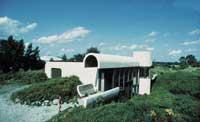
However, at present and in these environments, very few have the possibility of building a home, and most of them have to settle for the existing one. That is no excuse for not making changes in the housing we have. There are many options to make of what is more ‘bioclimatic’.
Analyzing the climate, the location of the housing and the origin of the highest energy expenditure, we can know the necessary measures to save energy: better insulation of the housing, better use of the sunlight to warm or illuminate the house, etc.

Gai honi buruzko eduki gehiago
Elhuyarrek garatutako teknologia




